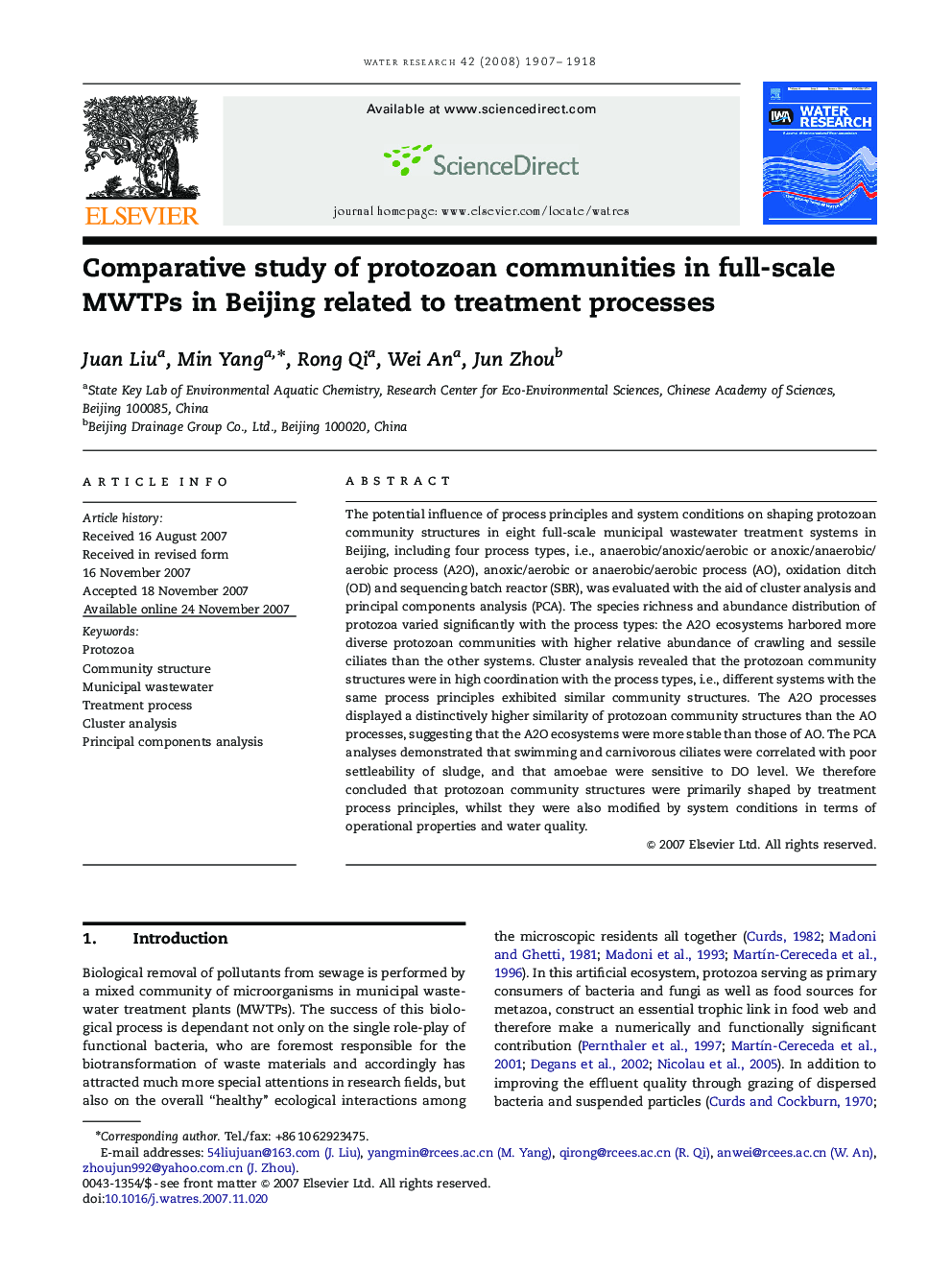| Article ID | Journal | Published Year | Pages | File Type |
|---|---|---|---|---|
| 4484918 | Water Research | 2008 | 12 Pages |
The potential influence of process principles and system conditions on shaping protozoan community structures in eight full-scale municipal wastewater treatment systems in Beijing, including four process types, i.e., anaerobic/anoxic/aerobic or anoxic/anaerobic/aerobic process (A2O), anoxic/aerobic or anaerobic/aerobic process (AO), oxidation ditch (OD) and sequencing batch reactor (SBR), was evaluated with the aid of cluster analysis and principal components analysis (PCA). The species richness and abundance distribution of protozoa varied significantly with the process types: the A2O ecosystems harbored more diverse protozoan communities with higher relative abundance of crawling and sessile ciliates than the other systems. Cluster analysis revealed that the protozoan community structures were in high coordination with the process types, i.e., different systems with the same process principles exhibited similar community structures. The A2O processes displayed a distinctively higher similarity of protozoan community structures than the AO processes, suggesting that the A2O ecosystems were more stable than those of AO. The PCA analyses demonstrated that swimming and carnivorous ciliates were correlated with poor settleability of sludge, and that amoebae were sensitive to DO level. We therefore concluded that protozoan community structures were primarily shaped by treatment process principles, whilst they were also modified by system conditions in terms of operational properties and water quality.
